- It’s what we do – adventure motorbike magazine
- BMW GS Safari Enduro = adventure motorbikes, news, reviews, publication
- BMW F850GS Rallye X
- Strap Yourself In
- The Dempster
- TomTom Rider 450
- Read Between The Lines
- Locked Gates – motorbike magazine, australian motorcycle publication
- Ural Adventure Ride 2018
- Sri Lanka – adventure motorbike tour, motorcycle magazine
- The Best Job In The World = australian motorbike magazine
- Wet Arses
- Yamaha Tracer 900
- Congregation 2018
- We Didn’t Have PLBs In Those Days
- Sahara To Sunraysia = australian motorbike riding tours news event magazine
- Managing Risk with Miles Davis
- Thinking Big? Start Small with Andy Strapz
- A Precautionary Tale from Karen Ramsay
- Checkout
- Fit out – australian adventure motorbike riding
Trevor Gerdsen set out on his first ever off-road adventure.
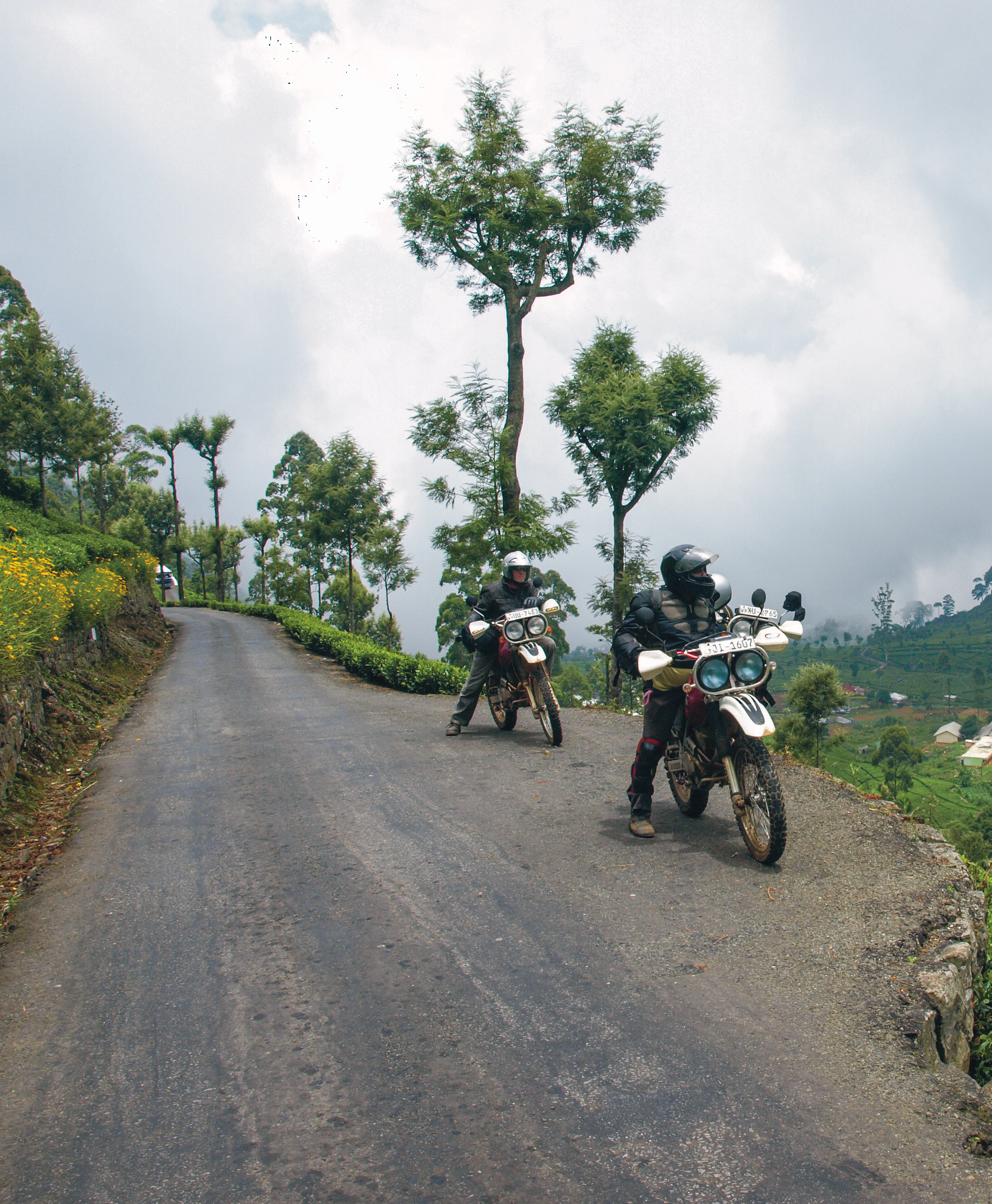
What had I got myself into?
It was mid-morning in Colombo and I’d just swung my leg over a dirt bike for the first time in my life. I was set for 14 days riding around Sri Lanka.
I blamed my riding partner, Albert. Last time we rode overseas it was New Zealand, and I’d chosen that destination and the traffic there had been nowhere near as frenetic.
At least Kiwis used their indicators (well…mostly) and tended to stick to their lanes (again, mostly).
In Colombo, anything goes.
Still, this was no ordinary dirt bike I was on. Unlike me, the bike had enormous experience, so much so that not much worked anymore.
There was no tacho, speedo, fuel gauge, warning or blinker lights, and the whole headlight and instrument-assembly points were pointing in a different direction to the rest of the bike.
But who needs indicators when the horn works? And I forgot to mention the brakes. They worked, sort of. But more of that later.
There were just two of us and our guide, Dayan, from Ceylon Tusker Tours, atop Baja Honda 250R twins.
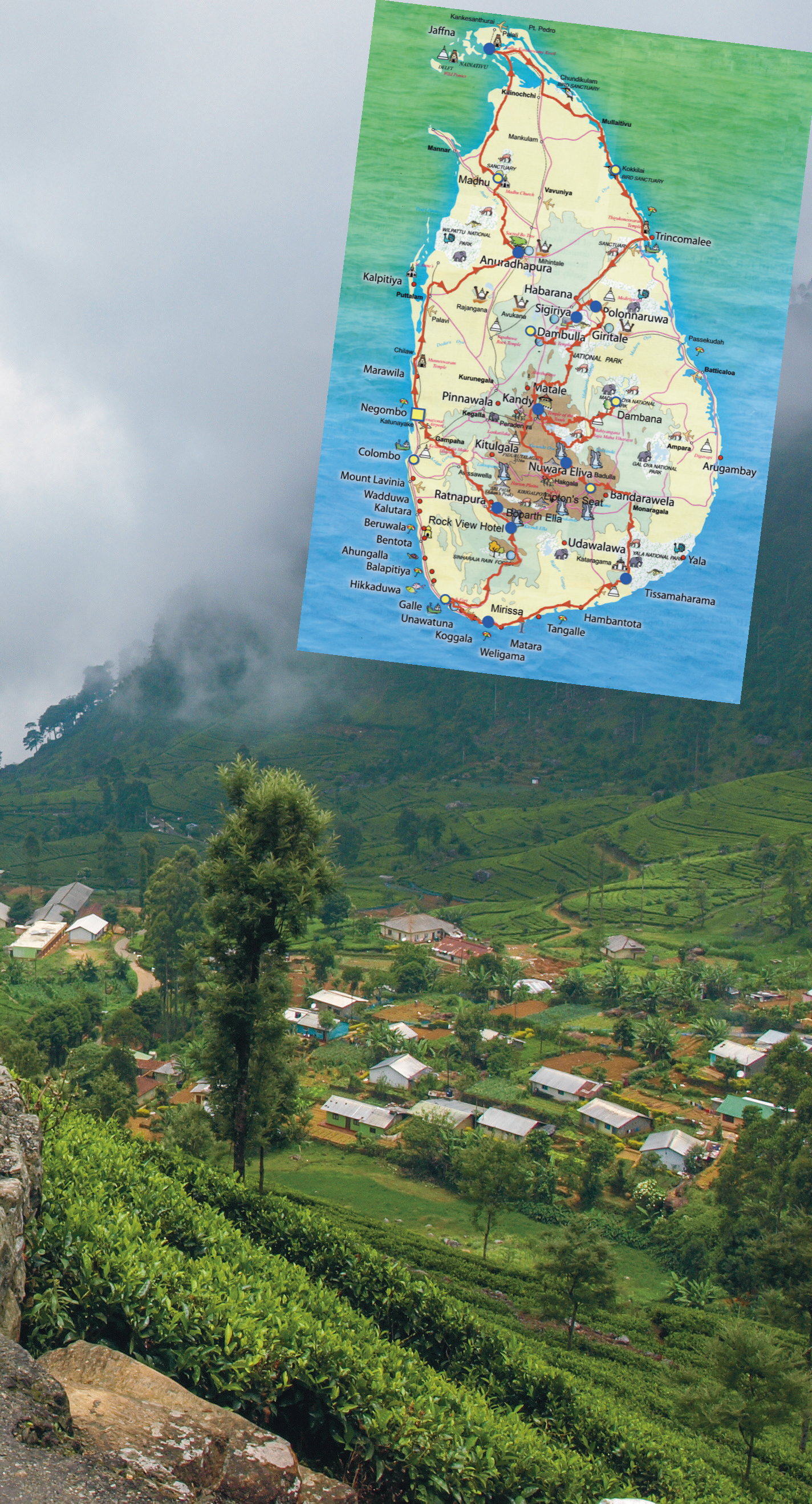 Tight and twisty roads abound in Sri Lanka’s high country. Passing is for the brave and the laybys are the only option when confronted by an oncoming bus or truck.
Tight and twisty roads abound in Sri Lanka’s high country. Passing is for the brave and the laybys are the only option when confronted by an oncoming bus or truck.
A coastal idyll
After 15 minutes on the bike in the Colombo traffic, noise and dust I’d turned liquid in my riding gear through adrenalin, fear, heat and humidity. As the days progressed, the first two subsided a little, but not the latter.
Thirty minutes riding north of Colombo we emerged onto an idyllic, coastal scene – golden sand and the azure-blue of the Indian Ocean to our left, with villagers hauling a drag net out of the breakers onto the sand, and palm trees, thatched huts and rice paddies to our right.
Off-road along the channels and dykes between rice paddies and ‘tanks’ (the local term for reservoirs) we went. There wasn’t a lot of room, but the bikes soaked up the road and all its corrugations, potholes and agricultural litter. Locals on 125cc Hero Hondas and step-throughs insisted on keeping up, or, much to our chagrin, overtaking us.
Turning inland we rode a combination of gravel and bitumen to the ruins of Anuradhapura with its massive stupas – shrines – and stone temples dot-ted all over the landscape.
After overnight rain, the dirt north to Madhu was soft and slippery. Apparently the Pope visited the Catholic church there several years back, but I suspect His Eminence took a different route.
On reaching the far north of the island the causeway into Jaffna stretched away, but we were stopped at a military check-point and Dayan had disappeared inside.
Fifteen minutes, then 30 minutes passed.
Passports, visas and bike documents were checked. We waited, and sweltered, and checked out the AK47s.
Years of war had left a strong military presence across the north of Sri Lanka, and burnt-out buildings reminded us of the conflict. But the people were friendly and generous, as always. We settled in at our ‘French’ hotel to a dinner of spiced butter cuttlefish that would surely score a 10 on MKR. The beer helped of course.
 An I-phone speaks all languages between the reservoir and the rice paddies.
An I-phone speaks all languages between the reservoir and the rice paddies.
The pirates of Kokkilai
Riding down the east coast toward Trincomalee the island wasn’t as lush, green or hilly as the centre had been, but the roads were good and the riding fast.
Several hours out of Jaffna, hot and dusty, we arrived at Kokkilai lagoon.
Dayan instructed us to ‘ride into the water beside the boat’. With the help of local fishermen (pirates in disguise, really) we hoisted three very hot bikes into two tinnies. There were no tie-downs, so, holding on firmly to the Hondas, we set off across the lagoon, supposedly to avoid a 20km, hour-long trip around, all for a few hundred rupees.
By mid-lagoon, as expected, the price had gone up to 1000 rupees.
But it’s a tough life and who could refuse these guys the price of a few beers?
Certainly not us…not when we were a kilometre from shore in the middle of an isolated lagoon.
They smiled. We paid. There were laughs all around.
Riding on, bike maintenance was called for, and a simple roadside lean-to was the service centre. Wearing local safety boots (thongs) the mechanic knocked out a link or two from the chain, everything was pulled back together and we were away.
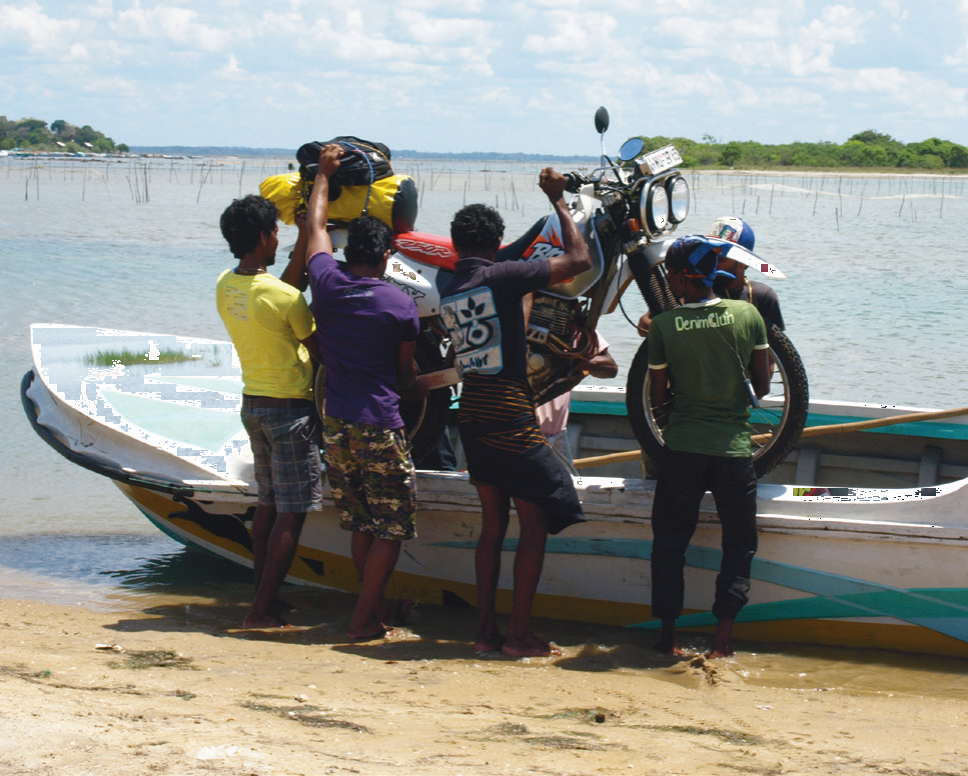 Unloading the hot bikes needed all hands.
Unloading the hot bikes needed all hands.
Ah. Sole.
Sri Lanka is a land of kingdoms, each with its own distinctive style in the ruins and sites that remain. Sigira Rock – a city carved atop a rocky prominence – was astonishing, as was the ancient kingdom of Polonnaruwa, with stupas and temples to rival sights anywhere else in Asia, and the nearby Dambulla caves.
In search of the perfect photo, I did the full circle around the stupas. Respectfully, I removed my shoes as instructed. I removed my socks also for good measure, but that was a big mistake. The dark, stone paving surrounding the stupa was hot enough to cook on. My feet roasted as I darted from shade to shade and the soles of my feet continued to stew in my riding boots throughout the day.
 Dayan on the causeway into Jaffna, all smiles once visas and papers had been checked.
Dayan on the causeway into Jaffna, all smiles once visas and papers had been checked.
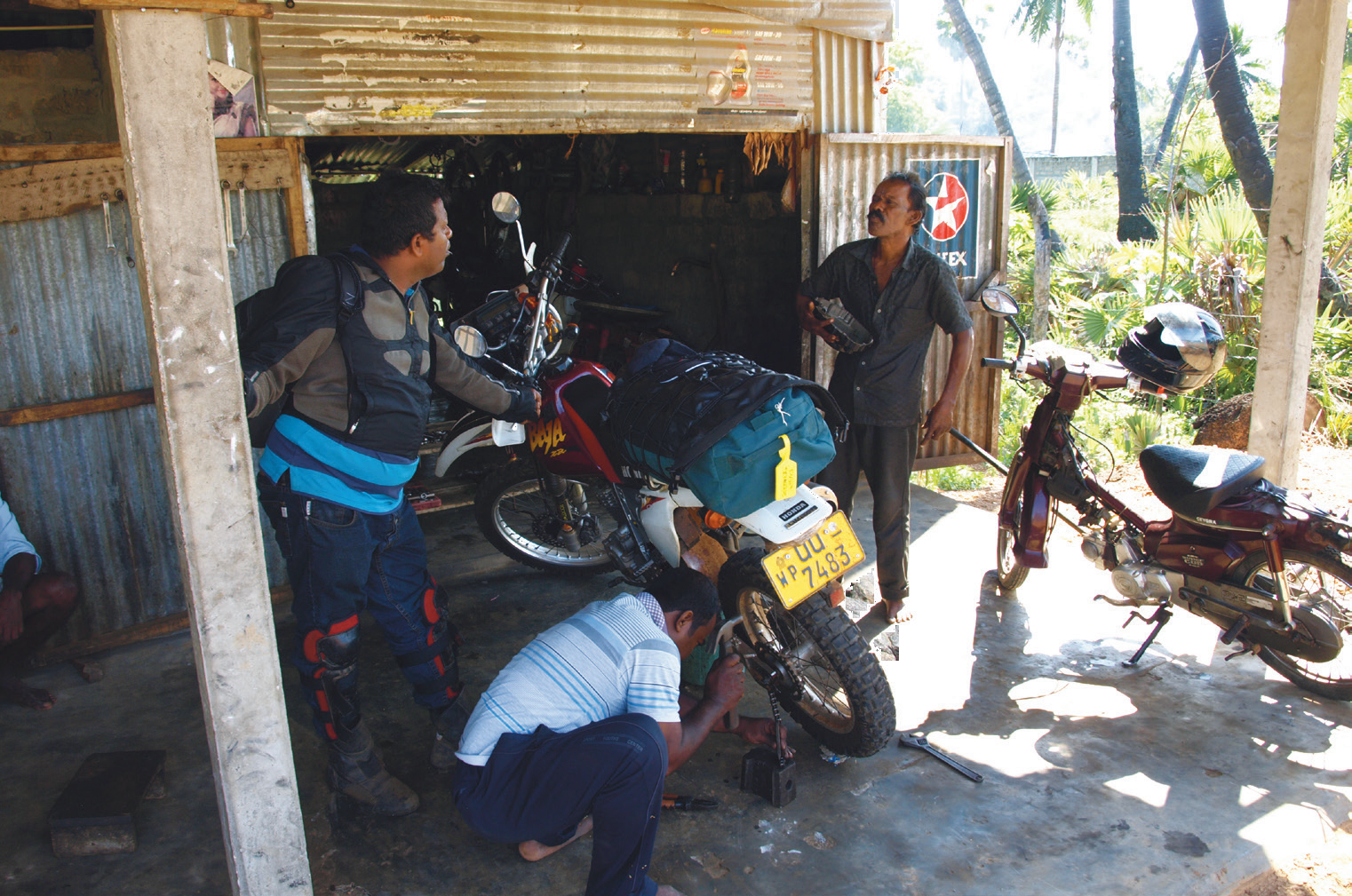 Whipping a few links out of the chain at the local bike ‘service centre’.
Whipping a few links out of the chain at the local bike ‘service centre’.
Local contact
To Kandy, via Matale and the Knuckles Range, a narrow, winding highway (the B274) emerged on to a gravel road wide enough to be a real main road. It was fast and flat for several kilometres, and monkeys constantly scampered across.
Well…it was wide and flat until we got to the hilly, washed-out and rutted section.
I did mention the brakes earlier, and Kandy was just the place to test them.
I came into town with a little too much speed, trying to catch sight of Albert and Dayan who’d darted ahead.
‘Oh shit!’ I thought as the back of a Toyota van reared up. ‘Brakes!’I wobbled and swerved toward the edge of the road.
Thwack. The left-hand Barkbuster met the rear of the van.
There was lots of noise but no damage and I was upright.
I will forever maintain it was superior riding skills on my part that avoided the fall, but more likely the contact righted the bike. The Toyota driver tooted and yelled, and I kept riding and took off hastily into town. It certainly wasn’t the moment for a polite chat with a local.
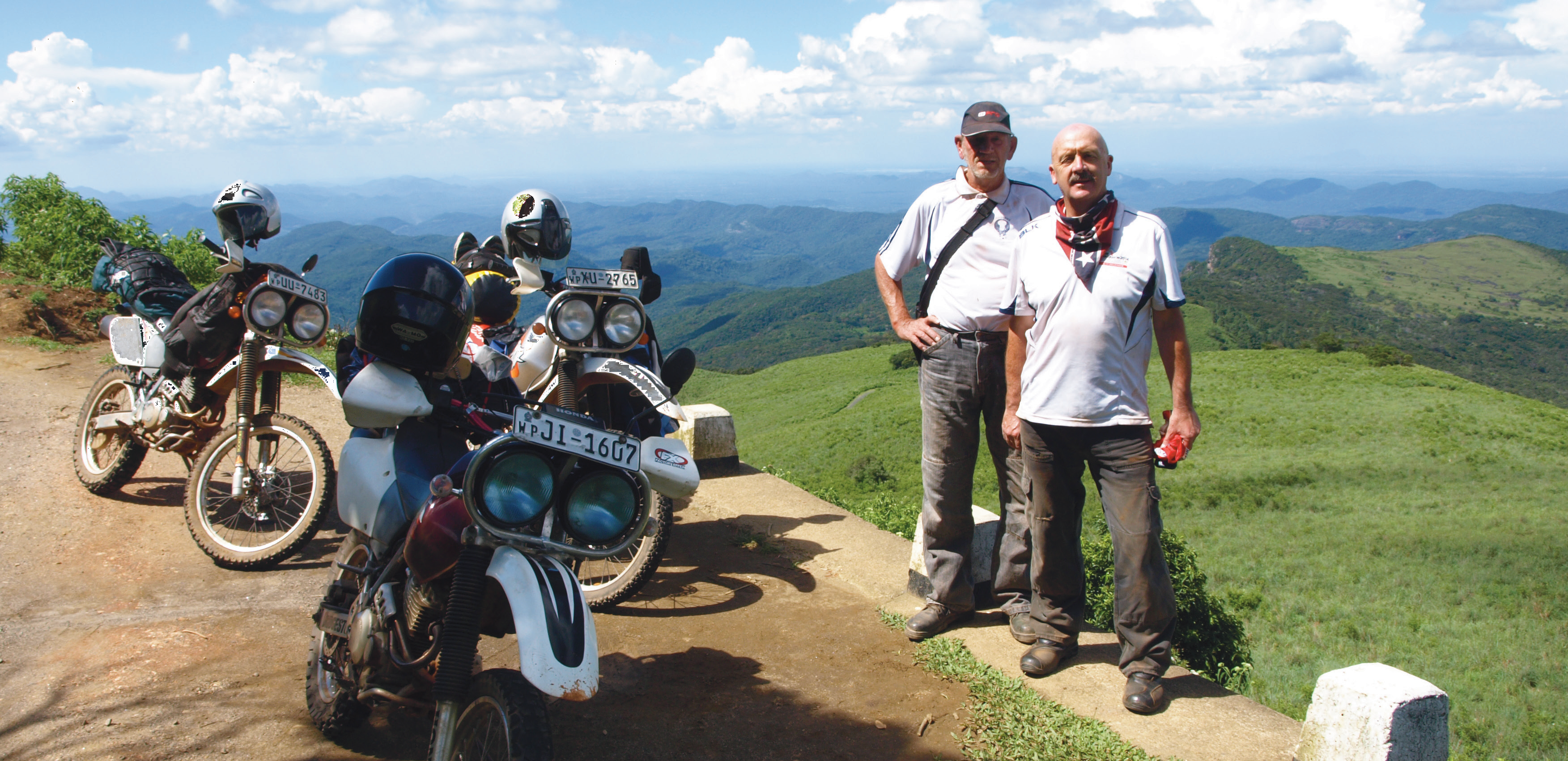 The author (right) and Albert, on their way through the Knuckles Mountain Range to Kandy.
The author (right) and Albert, on their way through the Knuckles Mountain Range to Kandy.
Missed
We rode the A26 from Kandy to Mahiyangama and Dambana and back.
The 18 hairpin corners down to the plain were legendary and the road was excellent. A big touring or road bike would have been just the thing.
We carefully passed a Tata twin-axle truck with an elephant rhythmically swaying to its own tune in the back, and the overloaded truck swayed more than the animal.
The tea industry dominates the mountain region around Kandy.
Twisting mountain roads ascend and descend through tea plantations, tall eucalypts and terraced fields with the Tamil tea pickers and their colourful temples (kovils) peppered throughout.
It’s fantastic motorcycling on any bike.
The ride up to Lipton’s Seat (yes, of the tea) twisted through mountain villages along extremely narrow, broken roads. There was barely room for a bike to pull over to allow vehicles to pass, let alone a bus or overloaded Ashok Leyland truck.
Lipton’s Seat sits atop an escarpment of 2000 metres and the view across the country is spectacular. Well, so I’m told. Rain, mist and fog shrouded the land-scape when we were there.
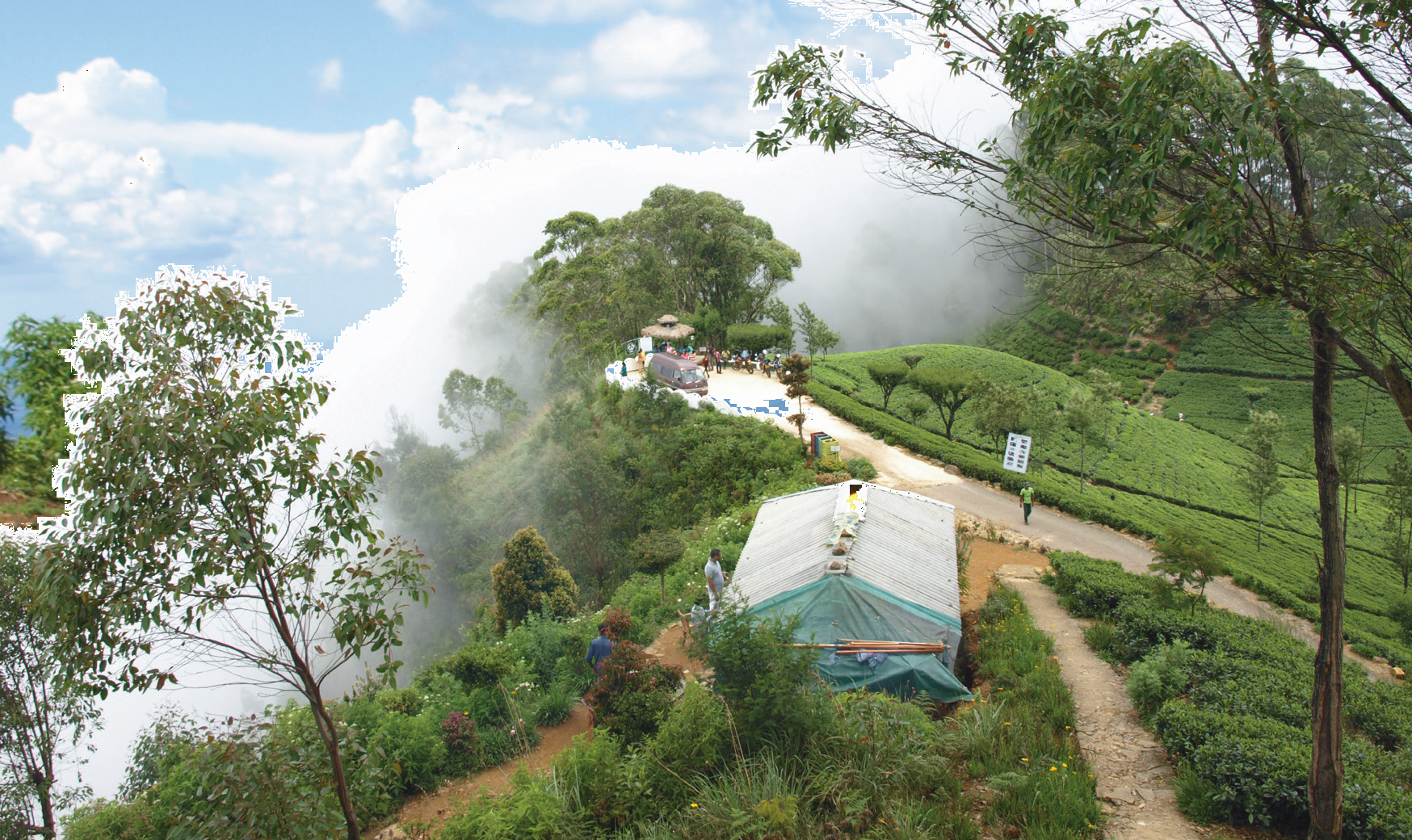 Lipton’s Seat sits atop an escarpment of 2000 metres.
Lipton’s Seat sits atop an escarpment of 2000 metres.
A wildlife encounter
The road plummeted from the hills down to the south coast at Tissamaharama, traversing a national park where we encountered a family of elephants along the road. Traffic stopped. The locals, God bless them, had brought several hands of bananas for just such an event.
To proceed past the bull elephant we were told to huddle behind a 4WD like ducklings behind the mother hen.
A hand of bananas hurtled out the front window of the 4WD, Mr Pachyderm was momentarily distracted and the convoy took off.
I could digress here with a discourse about cause and effect, chickens and eggs (or bull elephants and bananas for that matter), but it’s probably too late for that.
A little further on Albert played matador to the charge of a water buffalo and, in classic style, he flourished, the animal just missed, and both survived. Albert was slightly the worse off for emotional wear and tear, but the buffalo resumed its nonchalant swagger beside the road, apparently unruffled.
Talking of roads, Sri Lankans get fantastic value out of their road investments. A double white line is, of course,sacrosanct and not to be crossed. Nonetheless, between that line and the road shoulder it’s often possible to cram an amazing array of vehicles in line across, all competing for their share of bitumen.
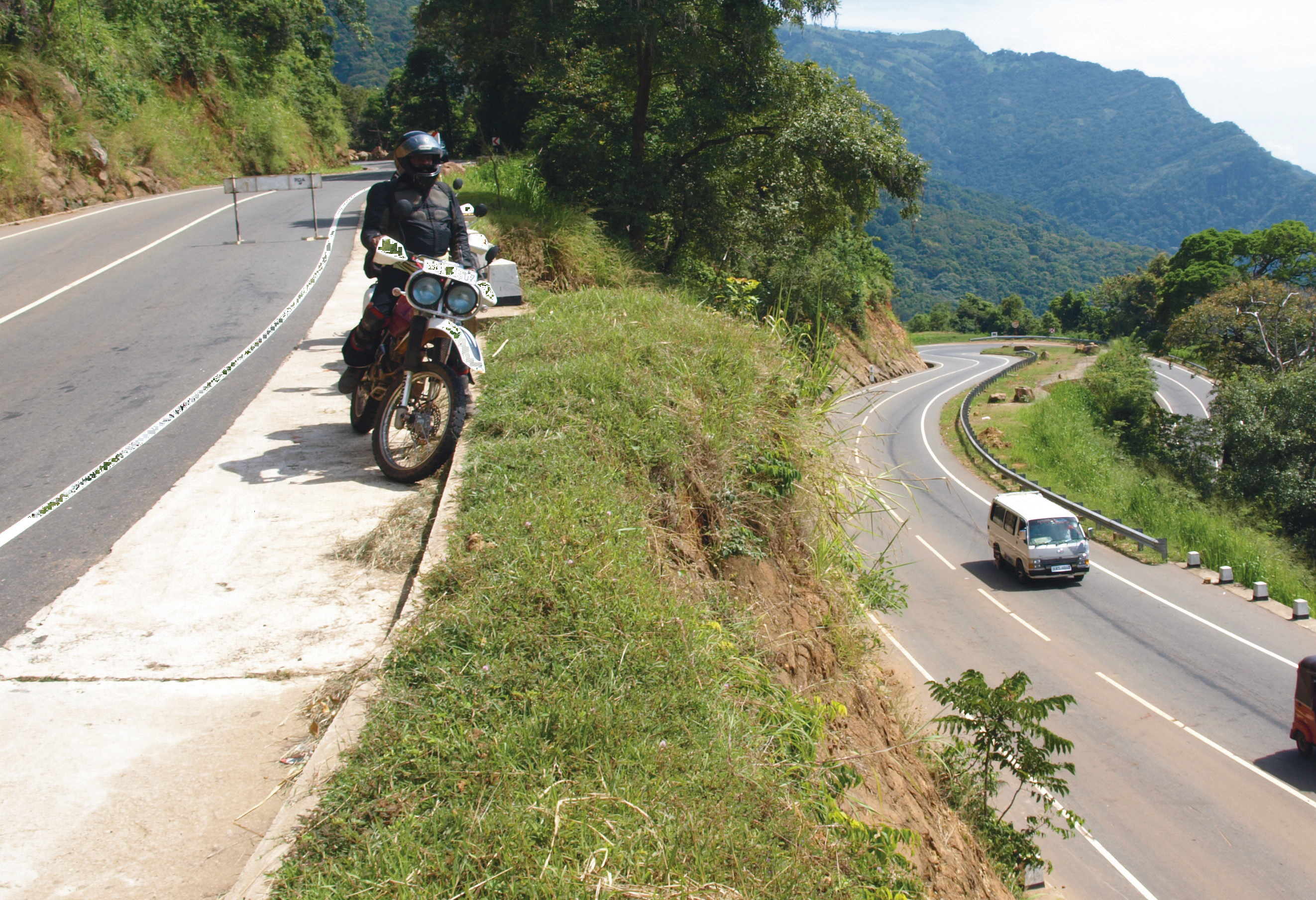
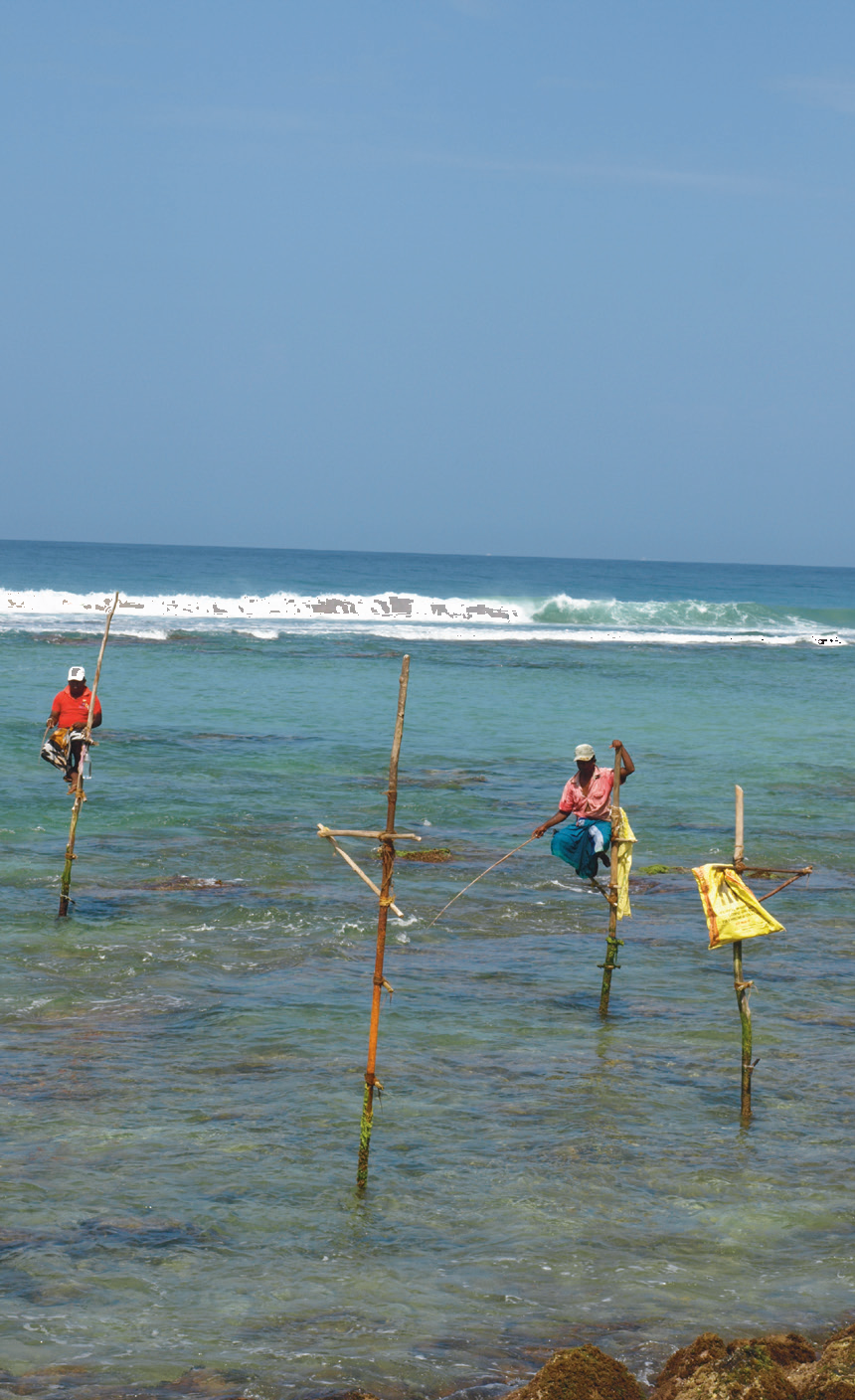
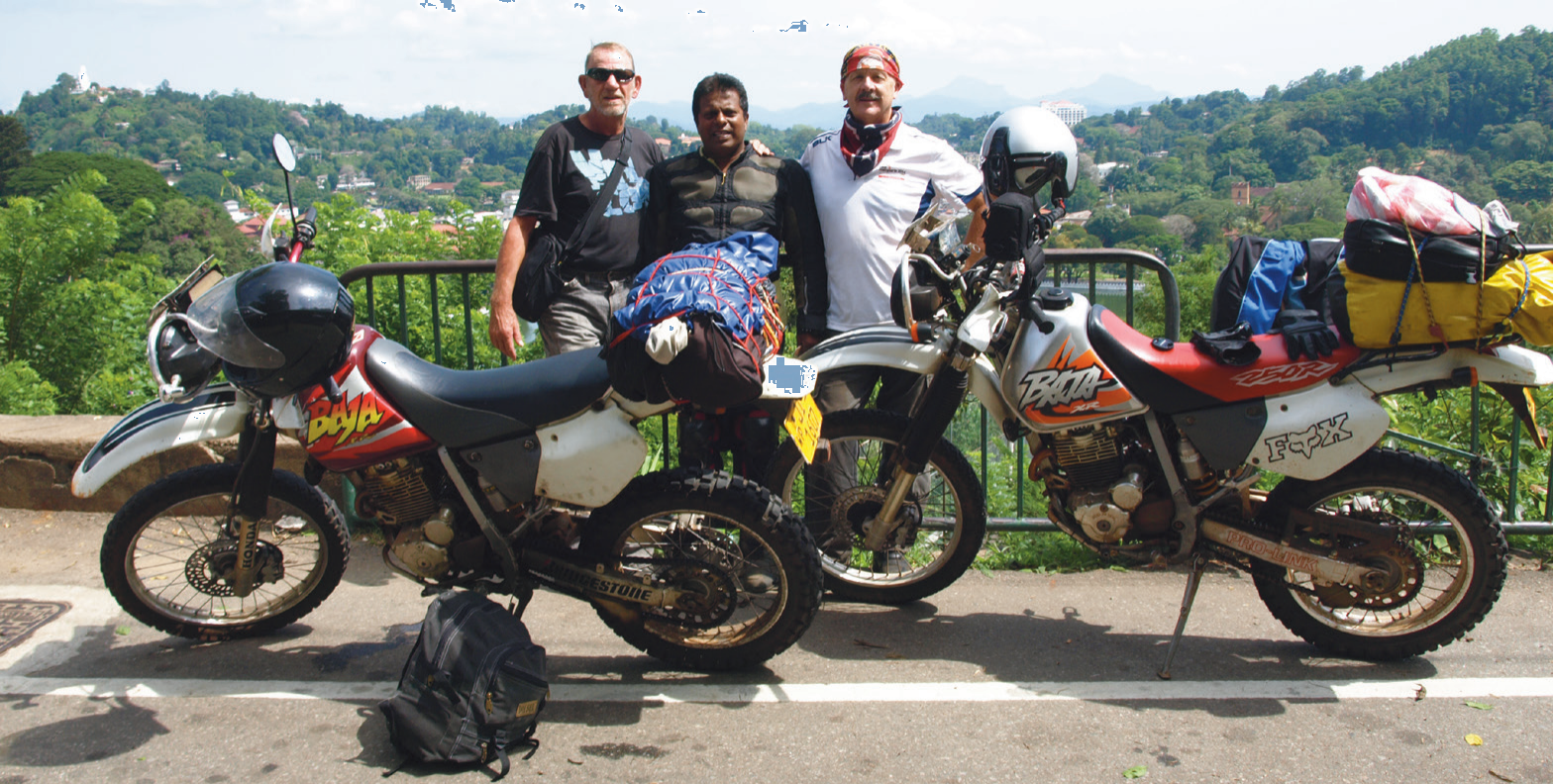
To Galle
With the lush green hills behind and the southern coast on our left, we headed to Galle and its historic fort.
A beautiful coastal city which was once a Dutch trading centre, the old town with its merchant buildings, churches, Dutch colonial houses and barracks reflected a different era in Sri Lanka’s long history, and shouldn’t be missed on any tour – organised or disorganised, two-, four- or more wheels.
Along the way the classic Sri Lankan image of the fisherman atop a pole caught our eye, gently swaying with the breeze and the tide, bringing home the days’ catch.
We stopped and dismounted, cameras out. A local approached. Ah, yes.
A little matter of the ‘photo fee’. We paid of course. It’s quite likely there was no hook or bait on the line and it’s years since they caught anything other than western tourists, but what the heck.
Barely 15 minutes out of Galle and heading back into the hills we were in lowland tea plantations on one side of the road with banana and coconut palms on the other. It was hot and humid, the mountains were bathed in mist and we sashayed through the corners, over the ruts and into heavy rain on our final day.
We survived 14 days riding with all the colour, noise, traffic and wonderful food that Sri Lanka offered, along with a history that was unique and captivating.
Off the bikes, we enjoyed a beer at Negombo Beach as the sun set over the Indian Ocean. Thoughts turned to where our next overseas ride would be, and this time it’s my turn to choose.
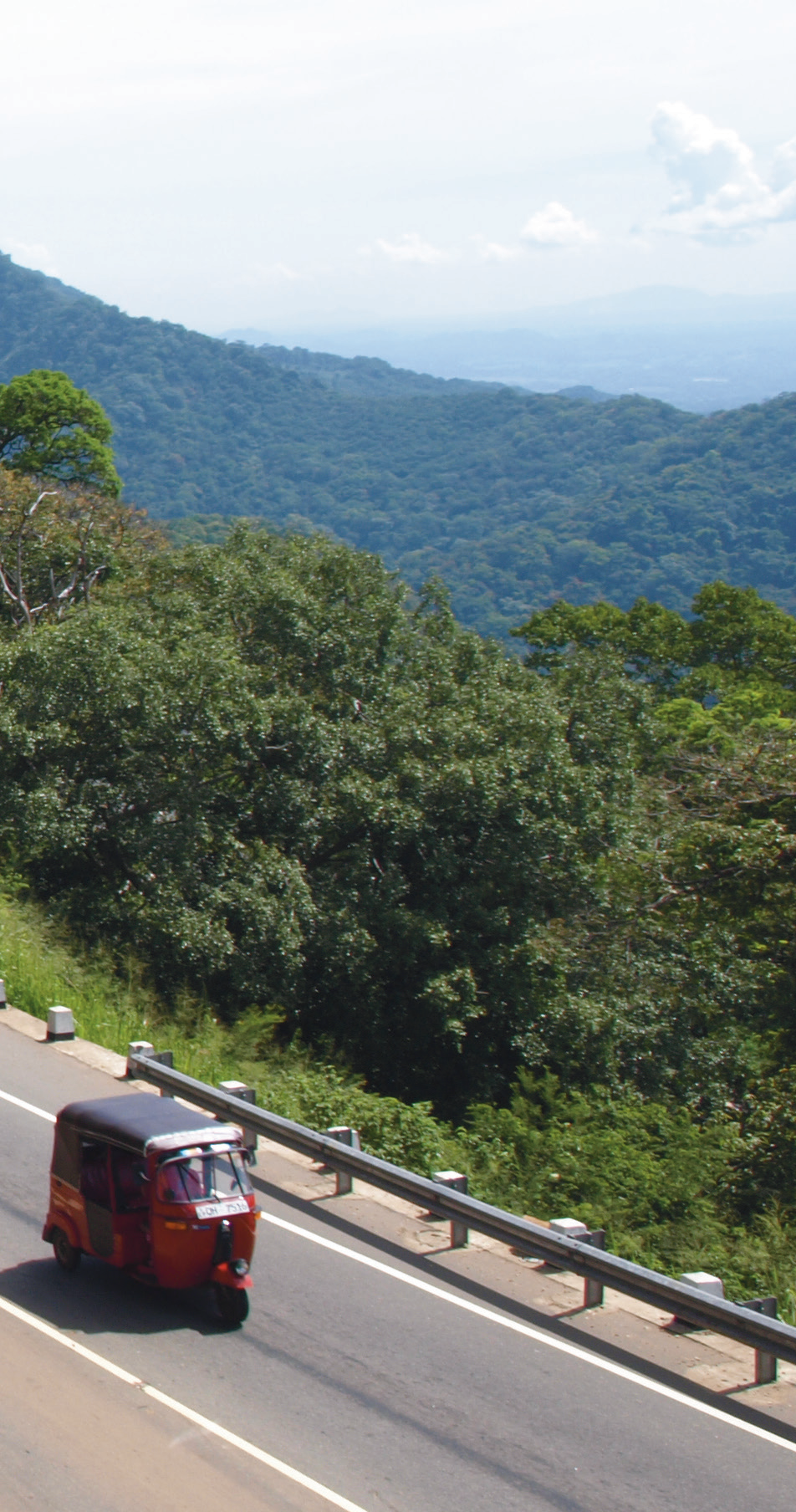
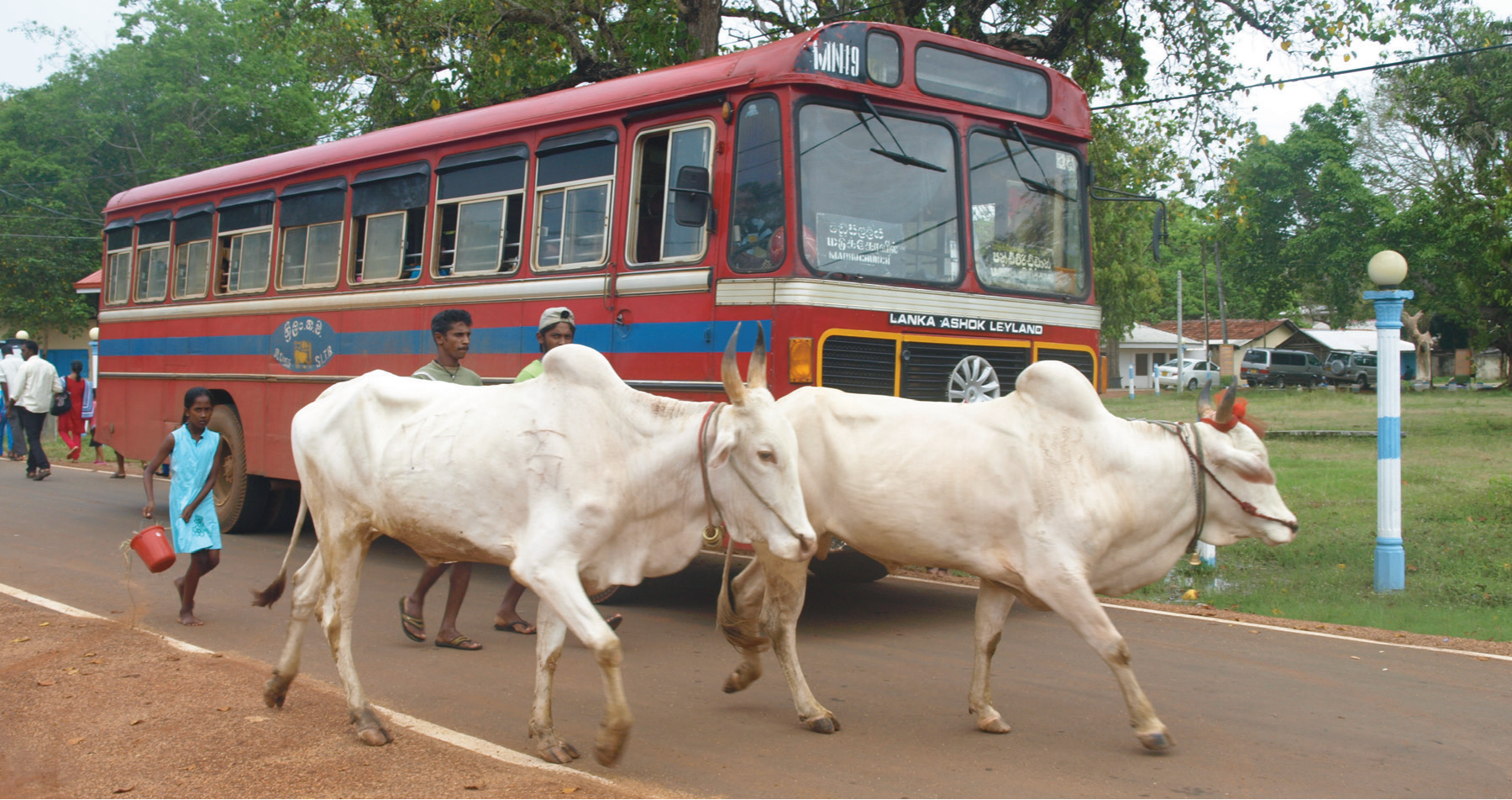
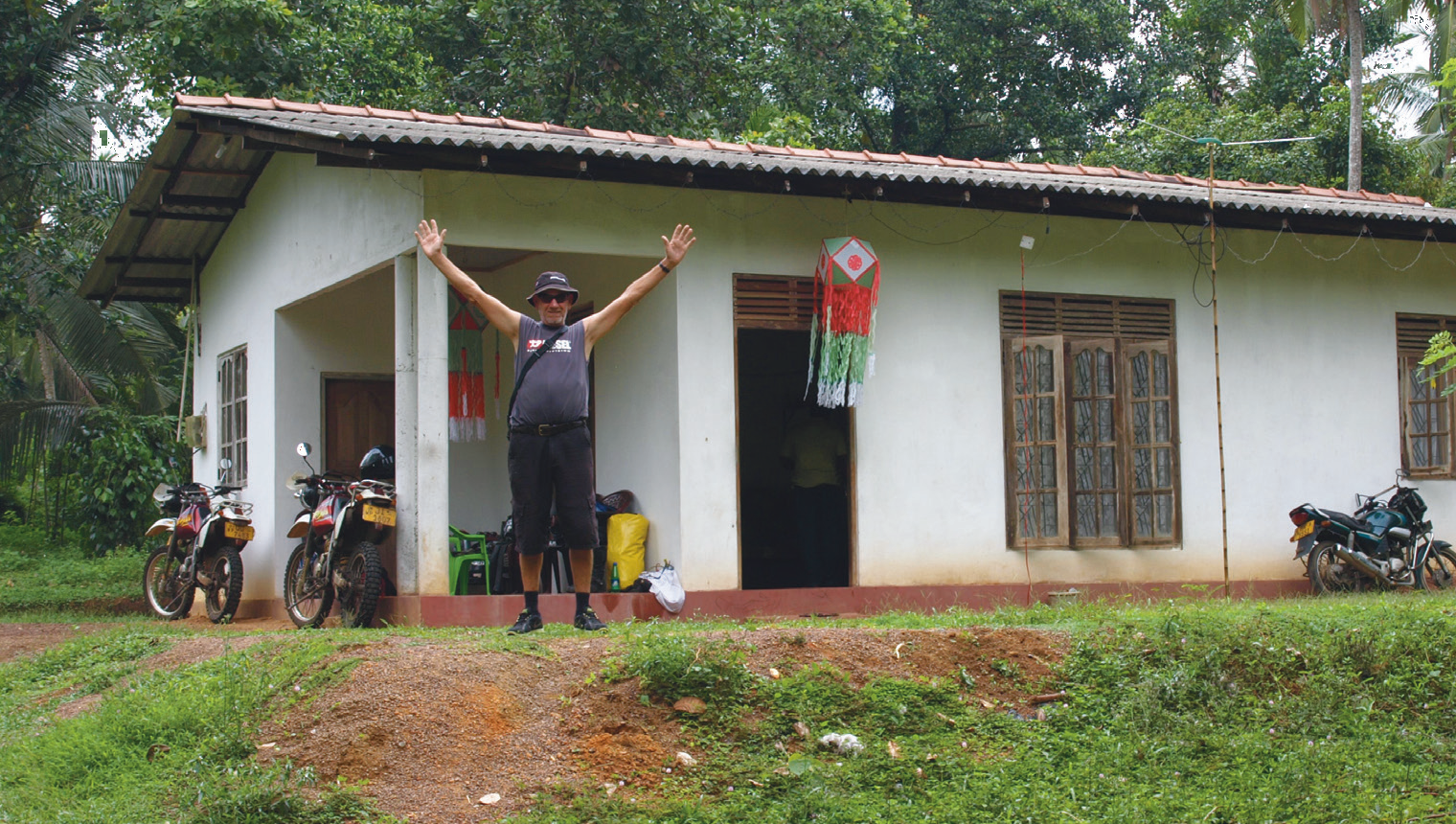

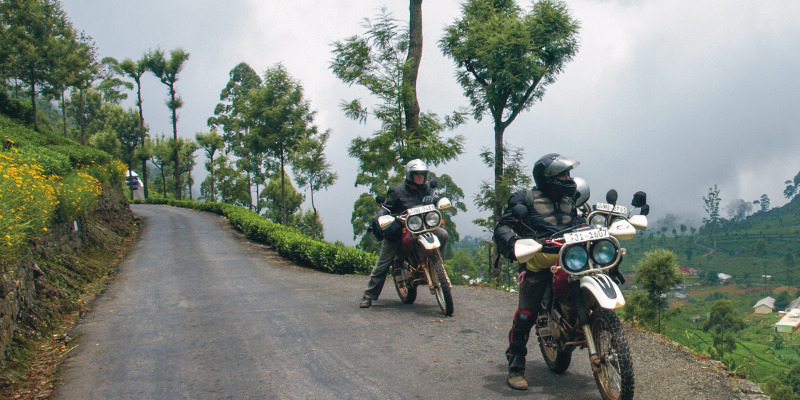





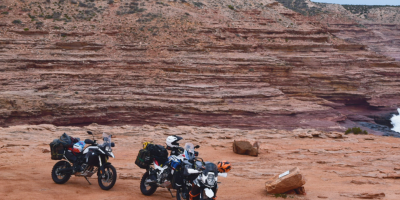






Comments